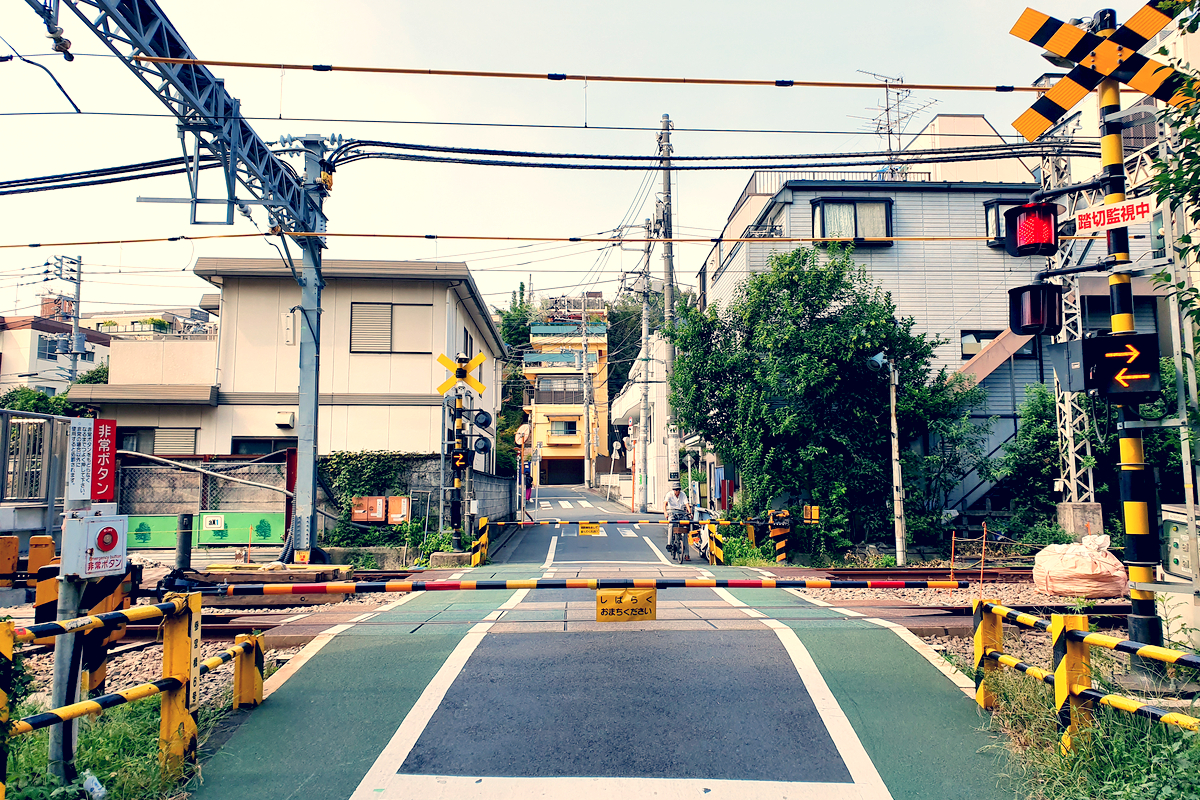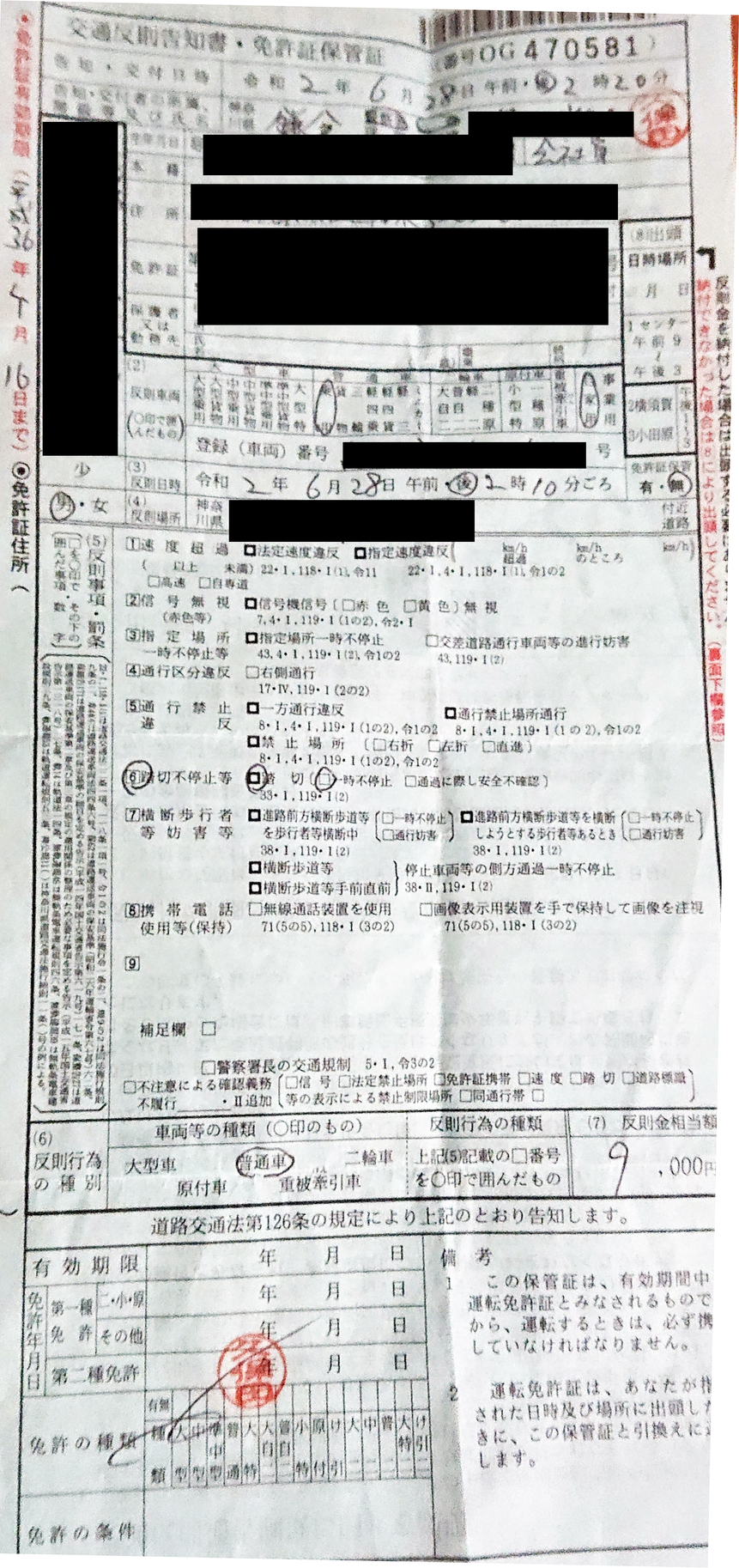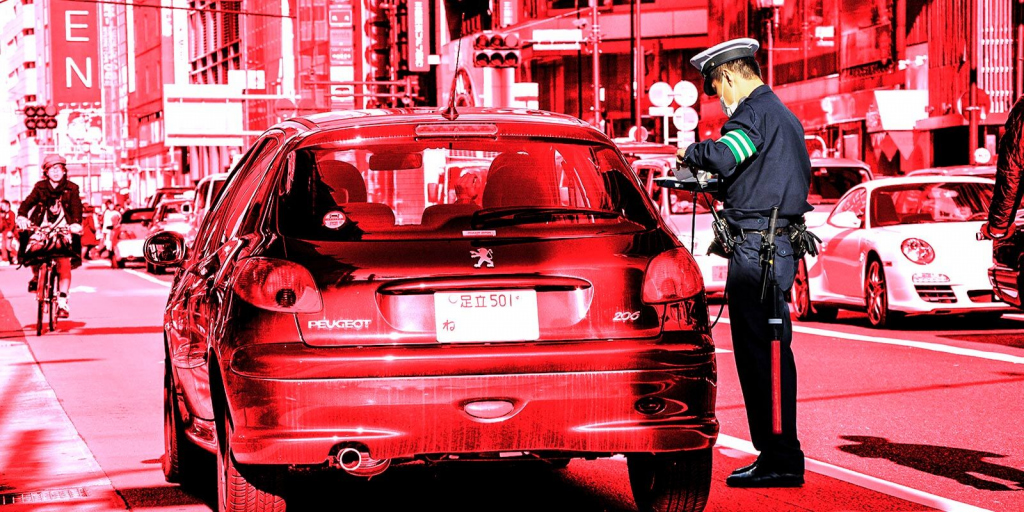It was supposed to be a much-needed outing — a day of wandering the streets of the suburbs near Kamakura, going to the beach, and checking out a bagel shop that I’d been meaning to go to for years. The whole day went off without a hitch, but that all changed on my way back to Tokyo after Google led me to make a right-hand turn on a road with train tracks running across it. Not paying attention to the train tracks, I continued for a few feet until I was greeted by the shrieking of two or three whistles from some policemen waiting to pounce on unsuspecting fools like myself.
You see, like many countries, Japan’s driving laws say that you must stop in front of train tracks before proceeding — not slow down, not drift, not pretend that you’re stopping, but actually stop and confirm whether a train isn’t approaching. As someone who’s mostly been driving in Tokyo, I’ve (quite wrongfully) gotten less cautious in regards to this rule — here in the big city, I’ve witnessed many drivers (sometimes, the police too) casually drifting right over the tracks without actually stopping. That is not the case in the smaller cities outside of Tokyo, however. In those cities, not stopping gets you a ticket right away, which is exactly what happened to me.

Always make a brief stop in front of train tracks before crossing even if a train is not approaching.
While I’m paying my ticket, however, I thought that sharing my experience could help you get the grasp of what it’s like getting stopped by the police and what to do in case you got one. But mostly, it’s to help you learn from my bad on how not to get one in the first place. Here’s what to do.
What to do if you get a ticket
1. Learn the colors of offenses
After your friendly neighborhood police person explains what you did wrong, you’ll be handed a ticket in one of three colors: white, blue or red. Even if you don’t speak Japanese, you can generally tell how much trouble you are in based on the color. White tickets are for minor offenses like not wearing a seatbelt or not listening to police orders, blue tickets are for more severe offenses like running a red light or texting while driving, and red ones are saved for the worst, like speeding way over the limit, driving without a license or driving under the influence.

White tickets (like the one I received) are typically issued for minor traffic offenses.
2. Count your points
The cost of a ticket depends on what you’ve done, but in the case of stop sign violations, you’re looking at a ¥7,000 fine. For reference, in Los Angeles, a stop sign violation can run upwards of $238 (around ¥25,500), so this will not break the bank as much as in other developed nations. What you have to worry more about is the points you rack up – three of them will make your coveted “gold” license go blue, taking away the lower insurance rates that go along with it. Be a bad boy and get six of them and you’ll see your license get suspended for 30 days. Note that you can reduce this to a minimum of one day if you spend the money (¥14,000) to take a safe driving course and pass the accompanying test.
Considering that smaller “white ticket” violations (turning without a turn signal, blocking an emergency vehicle, etc.) will only get you one point, you may think that if you only commit minor offenses you won’t need to worry about getting to the dreaded six-point mark. But know that these points add up and don’t expire until you have had one year of no violations, so your previous moving violations may add up and you could see yourself temporarily without a license.
3. Pay the fine
Along with your ticket, you’ll be handed a smaller form with the amount you’ll be charged for the violation. This payment is usually due a week or less from when you did whatever you did. The payment slip is only valid at banks and the post office, and only during their opening hours (until 3 pm for banks and 5 pm for post offices). Remember to write your name and address on this paper or the banks or post office won’t accept it. Manage to miss the deadline? Don’t worry, they’ll promptly send you another payment form in the mail.
How to avoid getting a ticket
1. Don’t break the rules
This might seem like the obvious one, but Japan has strict traffic laws that are still often broken by many, seemingly without consequence. Some examples of this are: not stopping when the light turns red (seeing several cars go through intersections after the light is red is commonplace), parking on the street where one shouldn’t, speeding and changing lanes over yellow lines. However, just because the retiree in front of you ran the red four seconds after it changed from yellow doesn’t mean you should as well — you never know where the “shirobai” (motorcop) will be hiding.
Pleading ignorance of the laws is not a good way to talk yourself out of getting a ticket, and I should know — I’ve tried (and failed). A good general rule when driving is if you’re not sure whether something is legal, it’s probably better not to do it.
2. If you do get pulled over, be nice
Police in Japan have full discretion over whether or not you will be issued a ticket, so make sure to be nice and apologetic. Genuinely (or at least convincingly) showing guilt can sometimes help with this, so try to muster up as regretful of a face as you can. Having a small kid or cute animal with you definitely helps (I have talked my way out of a ticket here by appealing it with my puppy in hand), especially if the cop is younger.
One other thing to consider doing is pleading ignorance of the situation, not the law: don’t say you didn’t know that you weren’t supposed to park on the street, say you didn’t see the “no parking” sign.
3. The proof is in the pictures
Are you certain you stopped at that stop sign? If you have a dash cam, look over the footage right away. If you can prove that you didn’t cross over that yellow line or run that light, the police will be much more likely to let you go. Dashboard cams are becoming more and more popular (and cheaper) in Japan, and you would be best off making the investment.
Of course, following these steps won’t 100% guarantee that you won’t get a ticket, but they are one way to try and avoid getting slapped with a fine and points off your license like I received. Drive safe, everyone!











